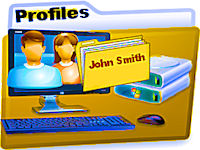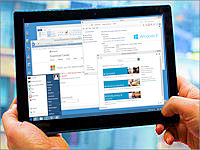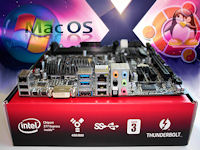April 2nd 2014
March 26th 2014
March 20th 2014
March 10th 2014
Feb 15th 2014
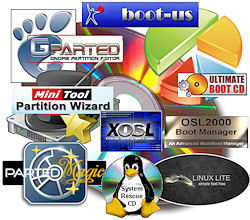
Clear and Easy.
Most of our partitioning needs can be handled by Window's own disc Management utility, but it can't do everything and there will be times when we can't use it, or it may just be easier to use a third-party tool. For cloning we want a tool that is dependable and has a clear interface that will let us see what we are doing so we can avoid errors such as overwriting the wrong partition. For a bootmanager we want one that is not only easy to configure and reconfigure, but one that is easy to install and most crucially easy to reinstall.
Partitioning and Cloning.
 There has in recent years been some major changes and updates to the way hard drives can and should be partitioned. Both of our recommended tools are up-to-date and actively maintained and fully capable in both the old and new ways of doing things, so whatever our needs they should be able to do the job for us. Before attempting any partitioning or cloning work we have to know if we are dealing with a classic or Advanced Format hard drive and the traditional or the new 4K partition alignments. We also need to know if we are using the traditional BIOS or the new UEFI firmware and if our hard drives are MBR or GPT styled. If you are new to all this then I'm afraid you have some reading ahead.
There has in recent years been some major changes and updates to the way hard drives can and should be partitioned. Both of our recommended tools are up-to-date and actively maintained and fully capable in both the old and new ways of doing things, so whatever our needs they should be able to do the job for us. Before attempting any partitioning or cloning work we have to know if we are dealing with a classic or Advanced Format hard drive and the traditional or the new 4K partition alignments. We also need to know if we are using the traditional BIOS or the new UEFI firmware and if our hard drives are MBR or GPT styled. If you are new to all this then I'm afraid you have some reading ahead. ![]() What is your Format, Style and Type?
What is your Format, Style and Type?

Partition Wizard
Handle the Quirks
Over many years we have found that all partitioning tools will have a quirk or two and Partition Wizard is no exception. Most of our partitioning can be done with Windows own Disc Management or Gparted (both of which have their own quirks) and we will use Partition Wizard mostly for its cloning abilities, but its main quirks can also come into play while cloning, so we need to watch out for them. The first is that when partitioning and cloning, the default setting for whether we get a primary or logical partition is the opposite to most other tools, so we have to be sure to manually change the selected option in the appropriate drop down box if we want a primary partition.
Also take extra care with disk numbers, as Partition Wizard starts numbering hard drives from 1, where as the majority of disk tools use the recognized convention of numbering disks from 0 (zero). Hence a hard drive numbered as Disk 1 in Window's Disk Management, will be listed as Disk 2 in Partition Wizard.
Extended Partitions
The other main quirk is the way it handles extended partitions on the classic MBR configured hard drives. There is no provision for manually creating or modifying an extended partition because it is all taken care of automatically behind the scenes, which would not be a problem if it was handled correctly. The problem lies with the fact that the extended is always dynamically resized to only encapsulate existing logical partitions, hence if we create only the first of several planned logicals, or we delete a last or a first logical, the extended will be resized to only include the remaining logicals, thereby leaving unpartitioned space on the drive. This unusual behavior need not be an issue if we are only ever using Partition Wizard, because it will automatically resize the extended to enclose any new partition or clone we want to put in the unpartitioned space.
The problems come if we use any other partitioning or cloning tool on the drive, as they won't be auto-resizing the extended and so will either be unable to use the unpartitioned space, or will produce an undesired configuration. Provided we are aware of this issue and take care when creating our extended and logical partitions, we can avoid any future working problems on a multi-logical drive as long as we never delete the first and the last logicals in our extended partition. If we keep a marker partition at both ends then we can delete and create and clone and re-clone all the other logical partitions without the fear of our extended being resized. Keeping a static first and last partition should not pose a problem or be an inconvenience because it is typical that the last logical will be a Data partition that we would never or seldom be messing with anyway. The first logical partition is where we recommend you keep a small and light utility operating system from where cloning, backup and maintenance tasks can be performed. Failing that it can be a Linux swap partition, or indeed have any purpose as long as we remember to avoid deleting it with Partition Wizard.
The Windows version can be found here www.partitionwizard.com/free-partition-manager.html which will take you to Download.com. Or alternatively look for it on your favorite download site as it is available from most of them.
The Bootdisc version.
To get the bootable CD/USB version you have to download an .ISO file from which you can make your own bootable CD/DVD disc or USB/SD flash device. Again this is free for home use and it is the last option on the main download page:-
www.partitionwizard.com/download.html
If you don't know how to make bootable media from an .ISO file then we have guides for both CD/DVD bootdiscs, and for USB/SD flash media. Note that there is a Media Builder tool on the Partition Wizard website, but this is only supplied with the paid versions and is not essential as there are many free tools we can use.
Learning and Using Partition Wizard.
The help file included in the program is above average, but there is also a substantial amount of excellent tutorials on the Partition Wizard website, including many videos. Here is the page on how to copy a partition, which is the single function we will be using the most for our cloning of Windows to other partitions and hard drives. www.partitionwizard.com/help/copy-partition.html
Learning and understanding a graphical partitioning tool is easy, it's knowing how to correctly configure hard drives that takes a little knowledge and learning. A large part of our website is dedicated to this subject and if you are a novice we hope you will start at the beginning. ![]() Advice and Warnings and Things to Know
Advice and Warnings and Things to Know

Gparted - (Gnome Partition Editor)
Gparted offers a myriad of options for moving and converting existing partitions and as always we suggest you give that a miss, as such things always involve some risk and we dislike risk of any kind on a required machine. Please refer to our article on Partitioning Best Practices. All we want from Gparted is standard partitioning functions and its reliable and much overlooked cloning abilities. We can't install Gparted in Windows so we either have to run it from bootdisc/flash device or from a Linux operating system that is installed on the hard drive. If you use Gparted as your primary cloning tool then we suggest you keep a Linux utility operating system either instead of a Windows one, or as well as.
The Inevitable Quirk
The main quirk that will affect us is an unusual one that has been inherited from the base utility that Gparted is built on. It is not a life changing problem but it can throw a lot of confusion our way when we come to configure our bootmanagers. Partitions are usually numbered in a way that reflects their actual physical order on a hard drive, but Gparted can jumble number order when it creates or recreates a logical partition. When we delete a logical partition the following logicals will be re-numbered so that a normal progression of numbers will be maintained. If we however create or recreate a logical partition in front of existing logicals, the following logicals will not be re-numbered and the new partition will get the next available number that is not already being used by existing logicals, hence the new partition and the following partitions will no longer have numbers that match their physical order on the drive. ![]() Partitions Numbered Out of Sequence.
Partitions Numbered Out of Sequence.
When cloning an operating system complete with its partition it is common with many cloning tools that the destination for the clone has to be free space, so typically we would have to delete a partition before we could replace it with a cloned partition. Indeed this is how our other tool Partition Wizard operates, but if we were to do this with Gparted we would produce out of sequence numbering. The solution for using Gparted to clone logicals is simple and built-in, Gparted will let you clone a partition into an existing partition, replacing only the data without altering the parameters of the partition as defined in the partition table. Just select to 'paste' the partition you are cloning to the partition you want to replace and click OK to the warning box about data being overwritten.
Most Linux Distros and their Live boot versions will already have Gparted included, or available from their software repositories. If you don't have it or you want the very latest version then there is no easy self-installing equivalent to a Windows .exe file, so you will have to know how to install software packages in Linux. Gparted download page.
The Bootdisc version.
The standalone bootable disc/flash version of Gparted is just as easy to make and use as the one for Partition Wizard. You just download the .ISO file and extract and write it to the bootable media of your choice - either CD/DVD disc, USB stick, or SD card. If you need some instruction on how to create boot media from an .ISO image file then we have a couple guides - CD/DVD bootdiscs - USB/SD flash media.
Learning and Using Gparted.
There is a wealth of information on the Gparted website and the help page links to all of it, including many outside tutorials. You'll come across some stuff talking about using the terminal and command line, but you don't have to go that route as everything we need from Gparted can be had by the usual point and click methods of a Graphical User Interface. Learning to use Gparted will also teach you about partitioning and hard drives, but as always we have to advise that if you are new to such things you should not play around with a tool as powerful as Gparted on a required working machine.
Gparted is an outstanding utility that is built upon other great tools that are all provided free of charge by their developers in the open source community. Hopefully it will be around for a long time to come and will continue to stay in touch with all the new and changing technology. If you come to appreciate it like we do and can afford it you could always contribute towards running costs by throwing the odd donation their way, or by buying a pre-made bootdisc or flash stick/card via the link at the foot of the Gparted download page.
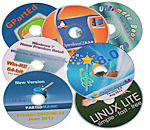
Can't Have Too Many Boot discs (or is that just us?)
Having all these additional bootdiscs gives us choice and a greater chance we will always have at least one disc that will work with any unusual hardware we may encounter. In most circumstances we will only need bootdiscs during the initial configuration and setting up of a multiboot machine, or if we have a major problem that prevents us from getting into any of our operating systems. In everyday operations we will have at least one utility operating system on the hard drive from where we will be able to more readily and quickly carry out our cloning and any backup and maintenance tasks.
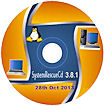 SystemRescueCD http://www.sysresccd.org
SystemRescueCD http://www.sysresccd.org
This is a Linux boot disc that is really a mini operating system with a tool set that has all manner of diagnostic, repair and recovery options. We as multibooters and cloners who keep proper backup are unlikely to ever need the most of it, but the few things it can give us are useful enough to justify having it in our tool kit. It has Gparted and an excellent graphical file manager/explorer called SpaceFM which with full NTFS support will let us access and edit files on most of our partitions or drives. It should also auto connect by ethernet and there is a browser so we can get online. There are a few other tools that we may use and we can run and even install the GAG bootmanager, which is one of our favorites. Note however that GAG can only be installed to the hard drive from the CD/DVD version, and not when SystemRescueCD was loaded from flash media. Tip:- when booting from the disk choose option 7 from the first option screen and you will go straight to the graphical desktop.
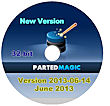 Parted Magic https://partedmagic.com
Parted Magic https://partedmagic.com
Another Linux based disc that is really the stand out product in what we want from a functional and easy to use boot disc. PartedMagic is the one we most recommend, but unluckily for you, you have just missed out on being able to get it for free, as the developer is now hoping to make a living from all his hard work and we wish him well. For a mere $5 you get more tools than you can imagine and a desktop environment that any Windows user will find familiar. There is great hardware, ethernet and Wi-FI support so you can get online with Firefox. Of course there is Gparted and a graphical file manager, plus the ability to install software or to run portable Linux apps. Also has the Plop bootmanager in the initial boot options. If you want to try before you buy you may still be able to find an older version somewhere around the net.
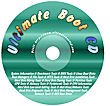 Ultimate BootCD http://www.ultimatebootcd.com
Ultimate BootCD http://www.ultimatebootcd.com
Another superabundance of tools we are unlikely to ever use, but there are a few that may be invaluable to us. Most notably the GAG and XOSL bootmanagers, particularly if we have chosen one of them to be our main bootmanager. Note that they can only be installed to the hard drive from the bootCD and not from UBCD running from USB/flash media. The means to reinstall our boot manager from outside of our operating system is one of the features that makes using a third-party bootmanager practical and desirable over the complex and difficult to repair Windows or Linux bootmanagers. Plop is also on there, as is the raw disc editing tool PTS discEditor from where we can see and change or restore hard drive disc Signatures. Also at the moment but probably not for much longer there is a full and complete copy of the last free version of our favored PartedMagic bootdisc, which of course includes Gparted and the rest.
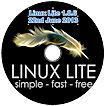 Linux Lite - Live https://www.linuxliteos.com
Linux Lite - Live https://www.linuxliteos.com
This is a full Linux operating system with much of the usual apps and utilities all there and ready to use. There are scores of lite Linux Distros around, many of which are a lot lighter than this one, but we favor Linux-Lite because it just works and has been developed with Windows users and humans in mind, plus we also simply just like the clean lines. It has Gparted and of course easy access to Windows files and partitions. There is seamless ethernet connectivity and great Wi-Fi support with FireFox and chat and email and office apps so that you could literally work from here if you had to. What's more the USB/SD flash running version can be made 'persistent' which means that changes and setting and installed apps will be permanent and remain after reboots. You can even install this to a USB external hard drive, which if that was USB3 it could be as quick as many an onboard OS. Being based on Ubuntu means there is tons of software just waiting to be easily downloaded and installed, and being Linux it will boot from almost any PC, so you can take your operating system with you.
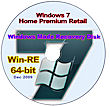 WinRE (Windows Recovery Environment)
WinRE (Windows Recovery Environment)
The Windows recovery disc has a set of basic tools for the techguys to diagnose and repair a damaged system. It also has the auto Startup Repair routines that will try to automatically detect and fix some of the common errors that may prevent the initial booting of the operating system. It is of course Windows centric and so useful if Microsoft's own built-in bootmanager is being employed for a Windows native dual or multiboot setup. For a system that has strayed from the Windows way and is using a different bootmanager, the auto repair system can do more harm than good when it tries to restore native boot routines. If we as multibooters and cloners can reinstall our own bootmanager and we have our own superior backup and recovery system that precludes us from ever having to repair a damaged Windows install, we will have little call for WinRE.
For a machine that is using and is wholly dependent on the Windows bootmanager then WinRE is essential, as it will be the only way in to try and repair certain bootmanager faults. Yes from Windows 7 onwards the recovery environment is included in Windows and can be started manually or automatically in the event of a problem, but sometimes a boot problem that affects Windows can also cripple the onboard WinRE, so also having it on bootdisc is advised. If you have a full Windows install DVD then you can access the WinRE tools from there, so having this dedicated disc is optional.
![]() How to create a Windows 7 system repair disc - TechRadar.com
How to create a Windows 7 system repair disc - TechRadar.com
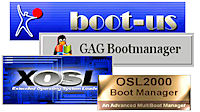
Boot Managers.
The tech guys could of course put in the effort to master the Linux or Windows bootmanagers, but for the rest of us that would take more time than we would probably care to expend. While it is possible to multiboot Windows clones with any bootmanager, it can introduce a level of difficulty that is hard to justify when there is an easier route. At present however when it comes to multibooting on the new GPT styled hard drives our options are limited, as all of our old school and favored third-party bootmanagers are incompatible, so until those tech guys give us some new bootmanagers our best option with GPT styled drives may indeed be the Windows bootmanager.
All bootmanagers have their pros and cons and you really need to know what you want from a bootmanager so you can then choose the one that best fits your requirements and circumstances. ![]() Choosing your Bootmanager.
Choosing your Bootmanager.
All product and company logos, icons and images that are reproduced on this site are the property and trademarks of their respective owners and are used here merely to illustrate their products, NOT to indicate or infer any endorsement or partnership unless otherwise stated. We have endeavored not to reproduce copyrighted images or graphics or infringe upon the rights of any trademark or copyright holder. If you believe or suspect we may have breached the permissible use of copyrighted material then please bring it to our attention. The reproducing or copying of original material from this site is currently allowed for non commercial purposes with the provision that your source is clearly indicated and that a back-link to the referenced information is included. Thank You. See our full Terms of Use. Material on this site is not guaranteed to be free of errors. Multibooters.com 2012 - 2013

